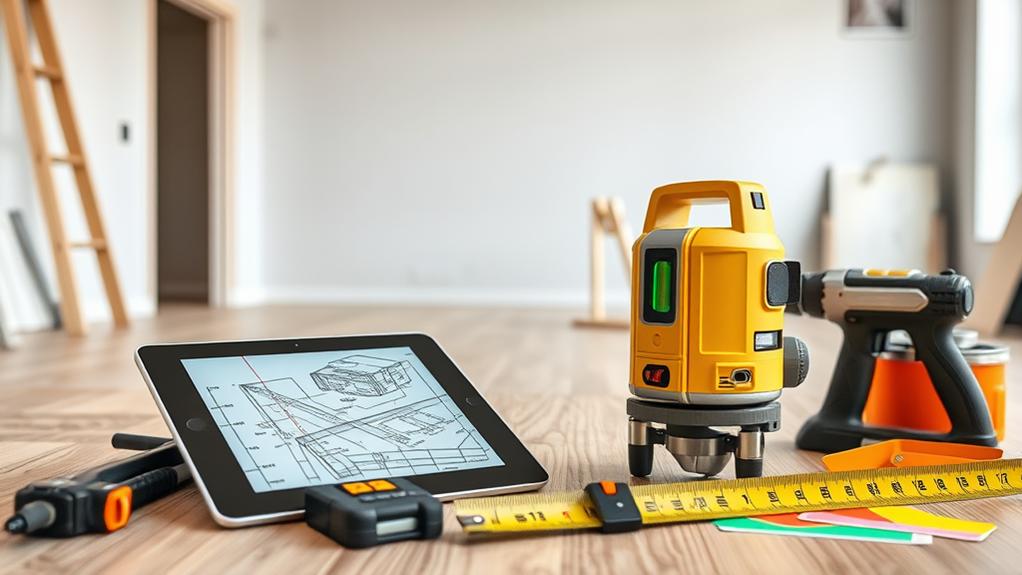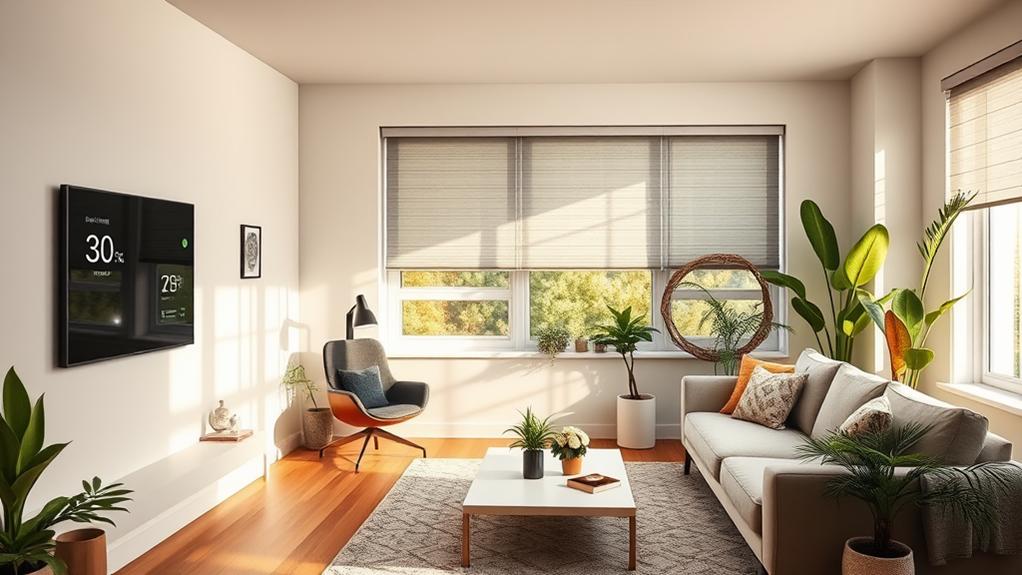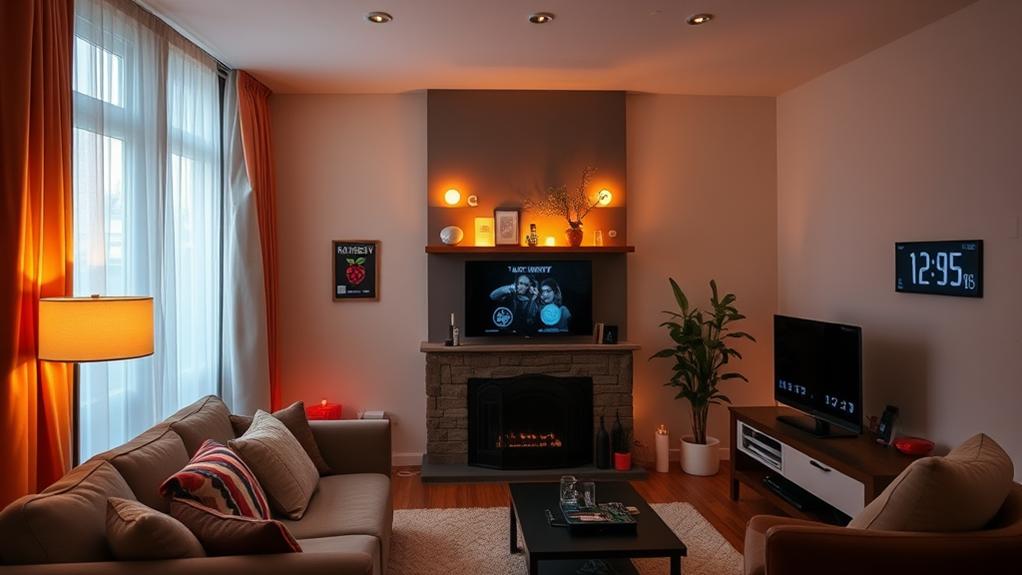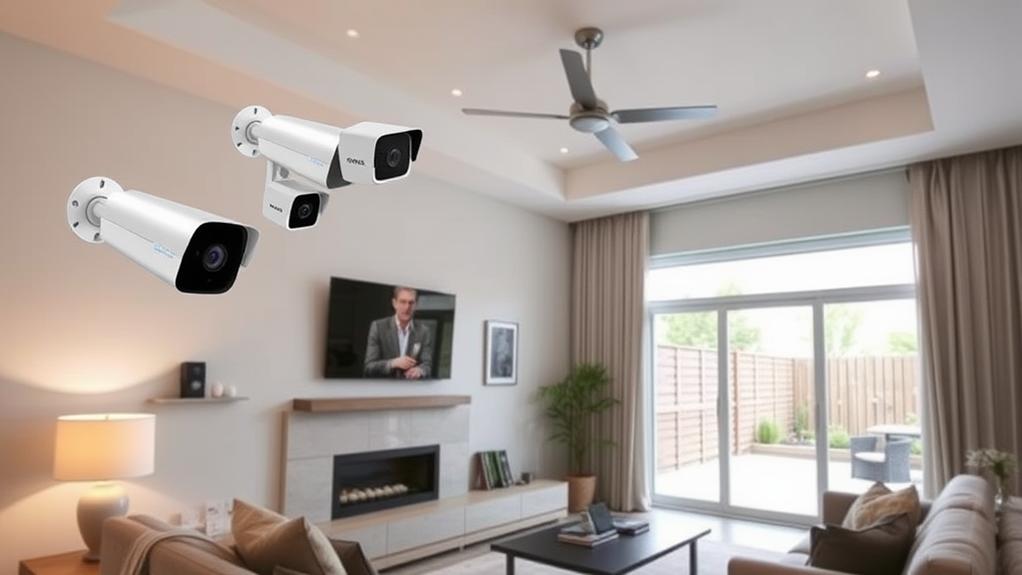When you think about a DIY smart home system, you might imagine a space where technology seamlessly enhances your daily life. It's not just about convenience; it's about tailoring a setup that reflects your unique preferences and needs. By choosing the right devices, like smart lights and thermostats, you can create a home that responds to you. But what does it really take to get started, and what are the key components you should consider? Let's explore the foundations of building your own smart home system.
Definition of DIY Smart Homes
A DIY smart home system refers to the concept of creating and managing a smart home using your own personal skills and resources, rather than relying on professional installation services. This approach allows you to customize your home automation to fit your specific needs and preferences. You get to choose the devices and technologies that work best for you, enabling a tailored experience that reflects your lifestyle.
By taking on the DIY route, you can save money on installation costs while also gaining hands-on experience with the technology. You'll learn how various smart devices communicate with each other, giving you a deeper understanding of your home's ecosystem. This knowledge empowers you to troubleshoot issues and make upgrades as needed.
Moreover, a DIY smart home system gives you the freedom to experiment and innovate. You can start small by integrating a few devices, like smart bulbs or plugs, and gradually expand your system as you gain confidence.
This flexibility guarantees that your smart home evolves alongside your needs, making it a truly personal space. Embracing a DIY approach not only enhances your home but also enriches your skills and creativity.
Key Components of Smart Home Systems
When building a DIY smart home system, understanding the key components is vital for creating a seamless and efficient environment.
You'll need to focus on three main elements to guarantee everything works together.
1. Smart Hub: This acts as the central controller for all your devices. It allows you to manage various smart gadgets from one place, whether through an app or voice commands.
Look for compatibility with the devices you plan to use.
2. Smart Devices: These include everything from smart bulbs and thermostats to security cameras and door locks.
Choose devices that meet your specific needs and can communicate with your hub.
3. Connectivity: Reliable Wi-Fi or a strong mesh network is essential.
Your smart devices must stay connected to function properly, so invest in a good router or extenders if necessary.
Benefits of DIY Automation
DIY automation offers numerous advantages that empower you to tailor your home environment to your specific needs. By taking matters into your own hands, you can create a space that not only enhances your lifestyle but also saves you money in the long run.
One of the biggest benefits is the flexibility it provides. You can choose which devices to implement, customize settings, and expand your system as your needs evolve. Plus, DIY automation often requires a lower initial investment compared to professionally installed systems.
Moreover, you gain a sense of satisfaction and accomplishment by building your smart home. You'll learn valuable skills and have a greater understanding of how your devices work together.
Here's a quick overview of some key benefits:
| Benefit | Description |
|---|---|
| Cost Savings | Reduce expenses by avoiding professional installation fees. |
| Customization | Tailor your system to fit your unique preferences. |
| Skill Development | Learn new skills and gain confidence in tech setups. |
Embracing DIY automation empowers you to create a smart home that truly reflects your lifestyle.
Popular DIY Smart Home Devices
Exploring popular DIY smart home devices can greatly enhance your living space and streamline daily tasks. With the right gadgets, you can automate your home, making it more comfortable and efficient.
Here are three must-have devices to take into account:
- Smart Speakers: Devices like Amazon Echo or Google Nest allow you to control your smart home with voice commands. You can play music, set reminders, and even control other smart devices effortlessly.
- Smart Thermostats: Products like the Nest Learning Thermostat help you manage your home's temperature efficiently. You can adjust settings remotely through your smartphone, leading to energy savings and improved comfort.
- Smart Lighting: Smart bulbs, such as Philips Hue, let you control your home's lighting from your phone or through voice commands. You can set schedules, change colors, and create the perfect ambiance for any occasion.
Setting Up Your System
Establishing a smart home system can feel empowering, as it transforms your living environment into a more convenient and efficient space. To set up your system, start by determining your needs. Decide which areas of your home you'd like to automate, whether it's lighting, security, or climate control.
Next, select a hub that connects all your devices. A central hub simplifies management and enhances compatibility. Once you've chosen a hub, begin purchasing compatible devices. Smart bulbs, thermostats, and cameras are popular choices. Make sure to check for compatibility with your hub to avoid integration issues.
Installation typically involves connecting devices to Wi-Fi and following instructions for pairing with your hub. Most setups are user-friendly, guiding you through the process via apps.
After installation, customize your settings. Create schedules for lights or set up alerts for security cameras to fit your lifestyle.
Future Trends in Smart Home Technology
As you enjoy the efficiencies of your newly set up smart home system, it's exciting to look ahead at the future trends shaping this technology.
The landscape of smart homes is evolving rapidly, and staying informed will help you maximize your system's potential. Here are three key trends you should watch:
- Enhanced AI Integration: Future smart homes will rely heavily on advanced artificial intelligence, allowing for more intuitive interactions. Your devices will learn your habits, adapting to your preferences seamlessly.
- Interoperability Standards: As the smart home market grows, expect devices from different manufacturers to communicate better. This means you won't have to worry about compatibility issues when expanding your system.
- Increased Focus on Security: With the rise in connected devices, security will be paramount. Future systems will offer advanced encryption and secure authentication methods, ensuring your data remains safe.
Conclusion
To sum up, a DIY smart home system is like crafting your own perfect recipe—tailored to your tastes and needs. By choosing the right components, you can enhance your living space with ease and confidence. The flexibility to experiment and expand makes it an exciting journey toward a smarter home. As technology continues to evolve, you'll find even more ways to customize your setup, ensuring your home remains a comfortable and efficient sanctuary for years to come.











